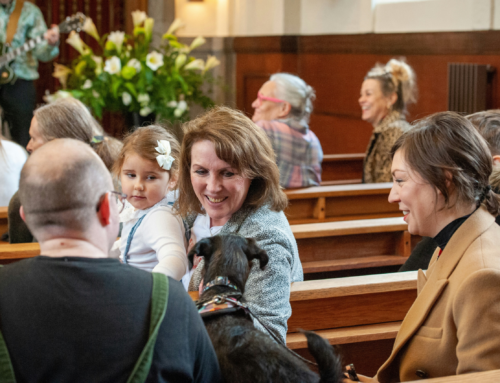Raised in a Pentecostal Christian faith tradition, growing up my faith habits were both communal and personal. We met together for corporate worship on Sundays and at mid-week small group meetings but most of the rest of the time my worship was individual and internal. I read my Bible, formulated my prayers in my own words in my mind, and reflected on what I had learned at church.
When I hit a time of crisis and solitude several years ago I found that these learned patterns were not enough to sustain my faith. My mind was too full of anger and fear to formulate prayers made of words. My heart was full of doubts that I wasn’t ready to expose to others yet. My body failed me in ways that meant I couldn’t participate in church as usual.
It felt as though my belief system was crumbling. I no longer had a polished faith, easily articulated and defendable.
I realized what I needed were spiritual practices that could bear the weight of my burden. I needed practices that I could practise as I struggled through my time of crisis.
Slowly I collected and built a repertoire of practices that allowed me to connect with God using my body as well as my mind and soul. During the time of COVID-19, many of us are experiencing solitude or the loss of communal, in-person worship in new ways. For some, this might bring on existential questions and struggles with doubt. I hope that these spiritual practices will help others in the ways that they have helped me.
- Find anchors in your daily life. They can be traditional prayer anchors such as saying grace before meals, or praying before bed, but they can also be personalized to your life. Filling your favourite mug with hot coffee every morning can be a moment to thank God for warmth and small comforts in your life.
- Read the scriptures in a way you haven’t before. Try a new translation, or paraphrase like The Message. Listen to the Bible as an audiobook. Read or listen to The Story, an abridged version of the Bible that weaves all the pieces into one cohesive narrative. Go for something really creative like The Word on The Street or The Action Bible.
- Light a candle as an invitation to the Holy Spirit to enter your home and your life. The presence of the flame throughout the day can be a constant reminder of the Spirit’s presence with you.
- Intentionally follow people on social media who you find uplifting and encouraging in your faith. Pope Francis tweets regularly. Scott Erickson posts wonderful art using the tag #spiritualformation on both Instagram and Facebook. Dion Oxford shares some beautiful insights and prayers on his blog. Little Way Chapel offers liturgies to do as a family in your home.
- Use a tangible tool, like a rosary or prayer beads to keep your mind grounded as you pray. Alternatively, use your fingers. Pray for different people in your life, one person per finger.
- Practise praying without words. If we can communicate with each other without using words (and we know we do) how much more so with our Creator? Prayer can be an image, a feeling, a memory, a song, or a scream. Let your heart call out to God.
- Use breath prayers to practise the presence of God and reduce your anxiety. Ember Collective shares great examples, such as (inhale) The Lord is my refuge…, (exhale) I will trust in him… Breath is reminiscent of the creation of man, of God breathing life into dry bones, of the mighty rushing wind on the day of Pentecost. Breath is evidence of God within us.
- Find podcasts that nourish your soul. If you’re grappling with doubts and are afraid to speak them aloud, hearing others have those difficult conversations can reassure you that you are not alone. If you struggle to put words to prayer, listening to someone else pray can give your heart something to resonate with.
I still don’t have faith perfected, and I never expect to, but I have found that leaning on spiritual practices that embody my whole self, and not just my intellect, has deepened my faith immensely. Given that incarnation is such a central concept of Christianity it makes sense that God would invite us to show up wholly present to commune with him. Let’s accept that invitation



